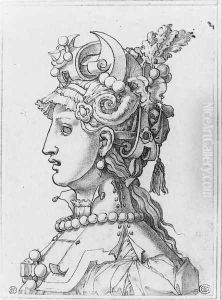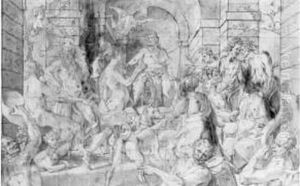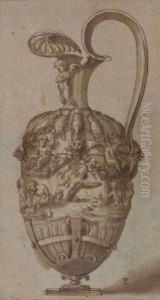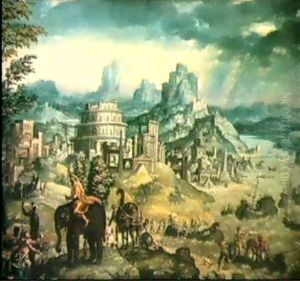Leonard Thiry Paintings
Leonard Thiry, sometimes also spelled as Leonard Thiry or Léonard Thiry, was a notable Flemish Renaissance painter and draftsman, born around 1500 in Liege, present-day Belgium. Although specific details about his early life and training are scarce, it is believed that he was influenced by the Italian Renaissance, which was common among artists in his region during this period. He was particularly known for his intricate and detailed designs, which contributed significantly to the spread of Renaissance ideas in Northern Europe.
Thiry's career took a significant turn when he became a member of the workshop of Raphael in Rome, although the exact dates of his stay in Rome are not clear. This experience had a profound impact on his style and approach to art, incorporating the Italian Renaissance's ideals and techniques into his work. After Raphael's death in 1520, Thiry returned to the Low Countries, where he became an influential figure in introducing Italian Renaissance styles to Flemish art.
One of his major contributions was his work in print design. Thiry was involved in creating designs for prints that were then executed by skilled engravers. These prints played a crucial role in disseminating Renaissance styles and motifs across Europe, especially in regions where direct exposure to Italian art was limited. His designs often featured elaborate compositions, classical themes, and a keen attention to detail, showcasing his mastery of drawing and understanding of Renaissance aesthetics.
Unfortunately, few of Thiry's works have survived, and much of what we know about him comes from records of his time and the prints that were made from his designs. He is believed to have died around 1550. Despite the limited number of surviving works, Leonard Thiry's influence on the spread of Renaissance art and ideas in Northern Europe remains significant. His ability to blend the ideals of the Italian Renaissance with the traditions of Flemish art created a unique and enduring legacy that continued to inspire artists long after his death.



